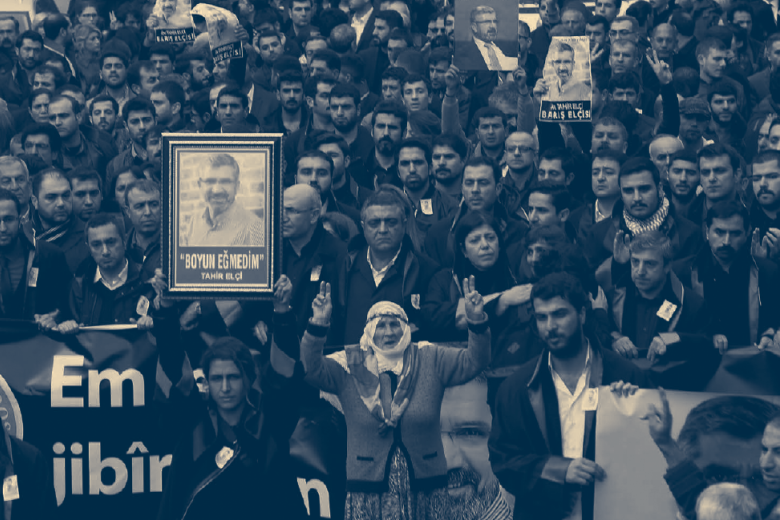The Istanbul Convention; new perspectives for victims of domestic violence?
The Istanbul Convention certainly has the potential to improve the protection and support of battered women. However, much will depend on the implementation by the States parties and the interpretation and assessment of the obligations by the monitoring body.
On 7 April 2011, the Council of Europe, consisting of 47 Member States, adopted the Convention on preventing and combating violence against women and domestic violence, for short the Istanbul Convention. The Convention entered into force on 1 August 2014 and so far 30 Member States of the Council of Europe have become parties to this treaty, thus accepting the monitoring authority of the Group of Experts on Action against Violence against Women and Domestic Violence (GREVIO). GREVIO is a body of 15 independent experts who monitor compliance with the Convention by way of a reporting procedure.
Although there is reason to rejoice since it can be considered a major step forward that we now have a treaty in Europe that explicitly prohibits gender-based violence - that is violence that is directed against a woman because she is a woman or that affects women disproportionately - there is also room for some criticism.
On 17 and 18 May, a group of experts convened in Lund, Sweden, to explore the changes and challenges in respect of obligations and approaches towards violence against women now the Istanbul Convention has been in force for almost four years, and GREVIO has published the first comments on States’ baseline reports. For each part of the Convention, another expert was requested to do research and to comment on the potential of the treaty. This author was asked to look into chapter IV concerning ‘protection and support’ and to reflect on the possibilities for female victims of domestic violence.
It is clear that the Istanbul Convention, like most multilateral treaties, is a text consisting of compromises and generalities so as to attract as many States parties as possible. Consequently, States do not have to overcome a big hurdle to ratify it, because it does not oblige them to take any rigorous or controversial measures.
According to article 1, the point of departure of the Convention is that women will be protected against all forms of violence, and that women’s substantive equality and empowerment will be promoted. Paradoxically, domestic violence, the most common crime against women, is the only crime mentioned in the treaty that is dealt with in a gender-neutral way. While it is admitted that particular attention has to be paid to women victims, States parties are encouraged to apply the Convention to all victims of domestic violence.
Though it is undeniable that children and men can also be victims of domestic violence, the overwhelming majority of the victims is female, and the great majority of the perpetrators is male. A gender-neutral approach is not helpful since on average women find themselves in a different, i.e. weaker socio-economic position from men which makes them not only more vulnerable for domestic violence, but also makes it harder for them to leave an abusive relationship.
Traditional societal roles and stereotypes concerning men and women are perpetuated in article 23 that focuses on the provision of shelters for victims of domestic violence. A solution that is far more contemporary and in line with the idea of equality between men and women, is that the perpetrator of a violent act has to leave the family residence to create a distance between himself and his victim. This possibility is only mentioned in the Convention in the context of ‘investigation, prosecution, procedural law and protective measures’. Temporary eviction of the perpetrator can be accompanied with barring orders and restraining or protection orders. It is a pity that this option was not put to the forefront to emphasize that times have changed. Men are no longer considered to be the king of the castle and it is strange that the victims and the children are uprooted, while the perpetrator is allowed to sit high and dry in the family home.
Another point of concern is that the Convention predominantly takes a criminal law approach assuming also that the victim will file for divorce. Though domestic violence should be criminalized, in practice, many female victims do not want to press charges against their partners and they do not want a divorce. They simply want the violence to stop. Criminal records may reflect negatively on the whole family and incarcerating or fining the perpetrator affects the family income. That is why States should look for new ideas how to make staying in the family home safer for women after the abuser has been removed. Modern technology makes it possible to take all kinds of measures such as fitting the perpetrator out with an electronic ankle bracelet that sets of an alarm if he violates a barring order, or equipping the victim with an attack alarm that can be used if the abuser gets too close. If this is paired to prompt reaction and interference by the police, the need for women’s shelters will decrease. In addition, mandatory anger management training and relation therapy for the perpetrator may be more commensurate with the wishes of the victim than imposing a fine.
In conclusion it can be said that the Istanbul Convention certainly has the potential to improve the protection and support of battered women. However, much will depend on the implementation by the States parties and the interpretation and assessment of the obligations by the monitoring body.
The conference papers will be published by Hart publishing in an edited volume entitled ‘Transformations and Challenges after the Istanbul Convention’ at the end of this year.
I. Westendorp
Dr Ingrid Westendorp is a senior lecturer and researcher in International Law and Woman and Law with the International and European Law Department of Maastricht University. She is interested in research on economic and social human rights, particularly the rights to housing and land, and issues concerning human rights of women such as domestic violence and gender equality in the context of culture.

-
The EU’s race to the bottom on asylum seekers’ rights
Throughout the EU, the rights of asylum seekers come under pressure. Overdue policy changes remain stuck in negotiations because of lacking political will. It is up to the European Commission to step up and protect the fundamental rights of asylum seekers.

-
Hurbain v. Belgium: towards a fairer balancing exercise between the right to freedom of expression and the right to privacy?
Admittedly, the right to erasure, or more colloquially, the right to be forgotten is nothing new in the European legal landscape. Indeed, this right can be found as far back as 1981 in the predecessor of the Modernised Convention for the Protection of Individuals with regard to Automatic Processing...

-
How many times can the ECtHR turn its head
Thank God for Judge Egidijus Kūris. In ECtHR ruling Ahmet Hüsrev Altan v. Turkey of 13 April, he showed that decontextualized analysis is not inherent to supranational judicial review. Once again saucing up his dissent with Bob Dylan, he asked “how many times can [the ECtHR] turn [its] head and...
